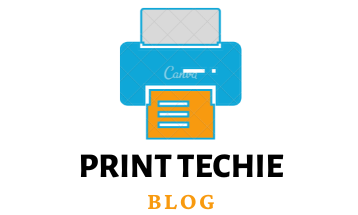3D printing technology has revolutionized the way we manufacture and produce objects. This innovative technology has enabled anyone to create custom-made objects quickly and affordably, from toys to medical devices. One area where 3D Printing has gained significant traction is the creation of helmets. Not only is 3D Printing an affordable and customizable alternative to traditional manufacturing methods, but it also offers precision and accuracy in production.
If you’re an education-focused customer looking to expand your knowledge and stay informed about 3D Printing, you’ve come to the right place. In this blog post, we’ll guide how to scale 3D-printed helmets. This knowledge will enable you to create helmets that perfectly fit the wearer’s head, allowing you to produce high-quality helmets that meet your unique requirements.
So, whether you’re a teacher looking to incorporate 3D Printing into your curriculum or a student interested in exploring this exciting technology, this blog post is for you. By the end of this post, you’ll have a comprehensive understanding of how to scale 3D printed helmets, including the benefits of 3D Printing, understanding of scaling in 3D Printing, steps to scale 3D printed helmets, and tips for successful scaling. So, let’s get started!
Benefits of 3D Printing Helmets:
3D Printing has numerous benefits over traditional manufacturing methods, especially when producing helmets. Here are some of the top benefits of 3D printing helmets:
Affordability:
3D printing helmets are significantly more affordable than traditional manufacturing methods. The cost of 3D Printing is typically lower because it requires fewer raw materials and has a shorter production cycle.
Customization:
3D Printing allows for greater customization of helmet designs. You can adjust the helmet’s size, shape, and other features to perfectly fit the wearer’s head. This customization makes 3D-printed helmets ideal for individuals with unique head shapes or those seeking a more personalized helmet.
Precision and accuracy:
3D Printing produces highly accurate and precise results. This precision ensures that each helmet produced is consistent in size, shape, and fit.
Time-saving:
3D printing helmets is a much faster process than traditional manufacturing methods. You can produce helmets in hours, significantly faster than the weeks or months required for traditional manufacturing.
Understanding Scaling in 3D Printing:
Scaling in 3D Printing refers to adjusting the size of a 3D model to fit a specific requirement. In the case of helmet production, scaling is essential to ensure that the helmet fits the wearer’s head perfectly.
Scaling is an important aspect of 3D Printing because it affects the accuracy and precision of the final product. Incorrect scaling can lead to too big or too small helmets for the wearer, compromising their safety and comfort.
To scale a 3D-printed helmet correctly, you need to understand the techniques used to adjust the size of the 3D model. These techniques include uniform, non-uniform, and scaling by percentage.
Uniform scaling involves adjusting the size of the entire 3D model by a fixed amount. This technique is useful when the entire model needs to be scaled up or down.
Non-uniform scaling involves adjusting the size of specific parts of the 3D model. This technique is useful when certain helmet areas must be adjusted to fit the wearer’s head correctly.
Scaling by a percentage involves adjusting the size of the 3D model by a specific percentage. This technique is useful when you need to produce a specific percentage larger or smaller helmet than the original model.
Read about: How Much Does It Cost to 3D Print a Miniature?
Steps to Scale 3D Printed Helmets:
Scaling 3D-printed helmets requires a few simple steps. Here are the steps to follow:
Measure the wearer’s head:
The first step is to measure the wearer’s head accurately. You can use a tape measure or a 3D scanning device for precise measurements.
Choose a 3D model:
Once you have the measurements, choose a 3D model that matches the helmet design you want to produce.
Adjust the model’s size:
Use the scaling techniques discussed earlier to adjust the size of the 3D model. Pay attention to areas that require non-uniform scaling, such as the forehead or cheekbones.
Test the print:
Once you’ve adjusted the 3D model’s size, print a test version of the helmet. This step will allow you to verify that the helmet fits the wearer’s head correctly.
Make necessary adjustments:
If the test print doesn’t fit correctly, make necessary adjustments to the 3D model’s size and print another test version until the helmet perfectly fits the wearer’s head.
Finalize the print:
Once you’ve verified that the helmet fits the wearer’s head correctly, finalize the print by printing the helmet using the desired material and color.
Tips for Successful Scaling of 3D Printed Helmets:
Scaling 3D-printed helmets requires precision and accuracy to produce high-quality helmets that perfectly fit the wearer’s head. Here are some tips to help you scale 3D-printed helmets successfully:
Use accurate measurements:
Accurate measurements are critical when scaling 3D-printed helmets. Use a tape measure or a 3D scanning device to precisely measure the wearer’s head.
Choose the right 3D model:
Choose a 3D model that matches the helmet design you want to produce. The 3D model should also be compatible with the 3D printer you’re using.
Use the right scaling technique:
Choose the right scaling technique based on the helmet design and the wearer’s head measurements. Uniform scaling may be suitable for some helmets, while non-uniform scaling may be necessary for others.
Print a test version:
Always print a test version of the helmet to verify it fits the wearer’s head correctly. This step will allow you to make necessary adjustments before finalizing the print.
Make necessary adjustments:
If the test print doesn’t fit correctly, make necessary adjustments to the 3D model’s size and print another test version until the helmet perfectly fits the wearer’s head.
Use high-quality materials:
Use high-quality materials to produce the final version of the helmet. The material should be durable, lightweight, and comfortable to wear.
Read more about: Can you pause a 3d print and turn it off:
FAQS:
How do you scale in 3D Printing?
Scaling in 3D Printing involves adjusting the size of a 3D model to fit a specific requirement. There are several techniques for scaling, including uniform scaling, non-uniform scaling, and scaling by a percentage. These techniques involve using software to adjust the size of the 3D model to ensure that it is the correct size for the intended use.
Can you scale up 3D prints?
Yes, it is possible to scale up 3D prints. Scaling up a 3D print involves increasing the model’s size using the earlier scaling techniques. However, scaling up too much may result in a loss of detail, so it is important to consider the limits of your 3D printer before scaling up.
How big should a 3D-printed helmet be?
The wearer’s head size should determine the size of a 3D-printed helmet. It is essential to measure the wearer’s head accurately and adjust the 3D model’s size accordingly using the scaling techniques discussed in this article. The helmet should fit the wearer’s head snugly but not be too tight or uncomfortable.
How do you make a 3D-printed helmet smooth?
To make a 3D-printed helmet smooth, you can use sandpaper for sanding down any rough or uneven areas. Alternatively, you can use a primer or filler to smooth the surface before painting or finishing. It is important to note that the material used for Printing will also affect the helmet’s smoothness, so choosing the right material is crucial to achieving a smooth finish.
3D printing technology has revolutionized the manufacturing industry, and helmets are no exception. 3D printing helmets offer numerous benefits, including affordability, customization, precision, and time-saving. Scaling 3D-printed helmets is crucial to ensure the helmet fits the wearer’s head perfectly.
Understanding the different scaling techniques and following the steps to scale 3D-printed helmets will ensure you produce high-quality helmets that meet your customers’ requirements. Using 3D printing technology to produce helmets, you can create unique designs and customize each helmet to fit the wearer’s head perfectly.
As an education-focused customer, using 3D printing technology to produce helmets is an excellent way to expand your knowledge and stay informed about the latest manufacturing techniques. Adopting this technology allows you to stay ahead of the curve and produce high-quality products that meet your customers’ needs.

